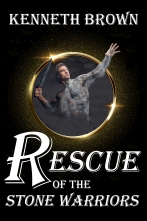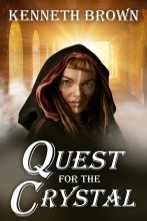Adgitize Press
The Reaction Scene or Sequel Scene
By: Ken Brown
Published: 6/29/2019
A Sequel Scene has the following three-part pattern:
- Reaction
- Dilemma
- Decision
Reaction
Suzy is standing counting the boxes and she just found out she’s missing five boxes of books. What’s going through her mind? This could be a character breaker. Will she melt down? Is she strong-willed and will get through this set back? How does your character react? We don’t just tell the reader, Suzy was distressed, tired and cried. Boring. We show the reader how she feels.
Suzy collapsed to the floor. Sweat ran down her face, rivulets of fatigue, worry or a heart attack? Her left arm felt numb as she tried to determine if she had fainted. Should she call an ambulance? Where was her phone?
Dilemma
She thinks it might be the five boxes of best sellers that she knew would help her make it past the first few days. She doesn’t have time to go back to the warehouse and look for the boxes. She was planning on showering before the party. She has six hours of work to do and no time to do anything.
This stage of the novel your character can think about her options. Maybe this would be a good time for her friend to come into the store and talk her down off the ledge. Suzy and her friend Cathy think through her possibilities or the two of them can talk out her choices.
Again, come up with ten to twenty ideas on how Suzy can solve her problem, the same way you did on the previous scene of conflicts.
- She can forget the boxes for now and try to have John deliver them tomorrow. Has she burned this bridge?
- Maybe Cathy volunteers to go get them.
- Or Cathy volunteers to set up the shelves while Suzy gets the boxes.
- They can call their other friend Jim to get the boxes.
- Cathy tells Suzy to go home and shower, she will take care of the shelves and have Jim get the books.
Ten to twenty ways to resolve the dilemma our POV character is facing. Let her talk it out. Maybe she shoots down the first five and comes up with another five possibilities. Why won’t they work?
Don’t make the decision easy to arrive at. Find ways to make her opportunities both good and bad. If she sends Jim to the warehouse, will John let Jim have the books? Does Cathy know where to put all the books that have come in? Plus, she has to inventory all the books and enter them into the computer. Does she know how to use the barcode reader?
Sometimes have Suzy shoot down the idea, other times let her friend shoot it down. You don’t want the final decision to be perfect and cozy. It has risks, it might fail. Let’s see that possibility. Or maybe Suzy thinks Jim is not capable of handling the task, but might be her only hope but doesn’t want him to handle the boxes. (Which might be a reason for the writer to choose Jim to handle that task.)
It is during the dilemma section that we can foreshadow bad things that might happen in the future. So, maybe we have Jim handle the boxes and only makes things worse. Or Jim does something else that goes awry.
Decision
Suzy makes a decision and has Cathy set up the store, Jim will rescue the boxes from the warehouse and Suzy will go home, shower and change for the party.
The reader takes a big breath, it’s all going to work out after all. The store will open on time. Suzy grabs her purse and as she’s ready to walk out the door the building inspector comes in and says, “What are all these people doing here, I haven’t given my approval to open the store.”
We go right back into the goal, conflict and disaster scene.
Review
To review, we have the character react emotionally to the tragedy that occurred in the previous scene. Readers want to experience emotion. That’s what drives a story. The reader’s heart rate will go up with our character’s reactions to the events and disasters she experiences. We need to make sure the reader experiences those same emotions.
So we show our character’s reaction to the events.
Then she settles down, our character is strong and won’t let anything stop her from succeeding. But she has to come up with a plan to overcome this disaster. That leads to the Dilemma section. She comes up with strategies to solve her problem. Sometimes the problem is minor and we can tack it on to the previous scene. Other times she will have to think over many different possibilities on how to react.
During the dilemma section, we can foreshadow bad things that might happen in the future.
Finally, she’s talked it out, talked about why her plan will work and she makes a decision. The decision leads us to the next goal and the next scene.
Recent Blog Articles
Full Moon Snow Covered Backyard
My Current Projects October 2020
Make Your Settings Do Double Duty
Understanding the Scene Process
What is a Scene Purpose or Focus
The Reaction Scene or Sequel Scene
What are the Building Blocks of a Novel
Your Writing Effort is Front Loaded
What I Learned from Reading Lee Child Books
Six Reasons to Describe Your Characters




